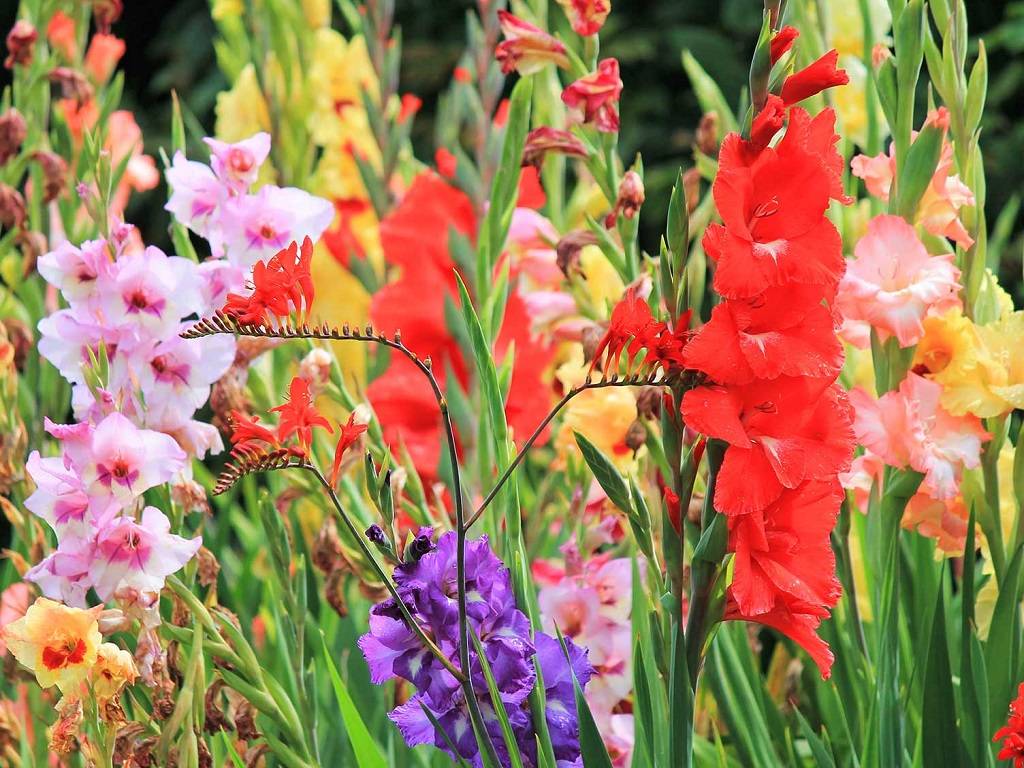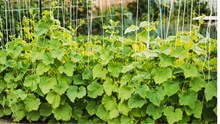
Gladiolus is a very popular bulbous ornamental plant. It makes a beautiful cut flower due to its magnificent inflorescence with florets of dazzling colours, in varying forms and sizes.
Gladiolus spikes can be kept in the pots for 8-10 days based on the variety and the surrounding circumstances. This is a crucial component of most flower arrangements, including bouquets.
Scope and National Importance
In the country, gladiolus is cultivated in an area of 11660 ha, with an estimated yield of 106 crore cut flowers. In terms of area and production, gladiolus came in third place among cut flowers. States that produce gladiolus flowers include Uttar Pradesh, West Bengal, Odisha, Chhattisgarh, Haryana, and Maharashtra. At present, states like Uttarakhand, Karnataka, Andhra Pradesh, and Sikkim have also started growing gladiolus. Even though gladiolus is primarily a winter flower crop, it may be grown all year round in areas with a moderate climate.
Soil and Climate requirements
Gladiolus can be grown in a variety of soil types, from clay loam to light sandy. However, it can be grown in deep (at least 30 cm), well-drained, friable soils that are rich in organic matter and nutrients. The pH should be between 5.5 and 6.5, which is slightly acidic.
Gladiolus can be grown in a wide range of climatic conditions. The climatic factor is crucial for growth and development. A mild climate is best for growing gladiolus well, while very hot or cold conditions are harmful.
Gladiolus prefers sunny conditions and shouldn't ever be planted in the shade. They also need at least 80% of the available sunshine for proper growth and flowering. The crop performs well under a temperature range of 27 - 30°C.
Varieties of Gladiolus
KKL.1, Archana, Basant Bahar, Indrani, Kalima, Kohra, Aarti, Arka Kesar, Darshan, Dhiraj, Agnirekha, Archana, Bindiya, Shree Ganes, White Prosperity, Priscilla, Summer Sunshine, Pusa Swarnima, Jackson Ville Gold.
Propagation Method
The method of commercial propagation is corms. For breaking corm dormancy, either cold storage of corms at 3 to 7°C for three months or treatment with Ethrel (1000 ppm) or ga3 (100 ppm) or thiourea (500 ppm) are used.
Field Preparation
The first plowing is done to a depth of 30 cm two months before planting and the second plowing is done two to three weeks before planting and is followed by rolling to make a fine tilth. For irrigation and uniform land leveling, the field is divided into small areas. In order to remove extra water, drains are also available.
Fertilizer Requirement
The application of organic manure is crucial for the growth of corms and flowering. However, excessive manure application should be avoided as this tends to make the flower spikes too tall and slender. It is recommended to apply 120 kg N, 150 kg P2O5, and 150 kg K2O per hectare, of which 60 kg of nitrogen (N), the complete dose of phosphorus (P2O5), and the entire dose of potassium (K2O) is applied as basal dose. The remaining N is given in two split doses, 30 and 60 days after planting.
Harvesting
The spikes would be ready for harvest from 60-120 days after planting depending upon the variety, corm size at the time of planting, and season. For the growth of corms, the spikes should be taken when they are in the tight bud stage, with one to five flowers showing colour and at least four leaves remaining on the plant. So, if the corm is planted in September, the harvest of the spikes will start in November or December and continue upto January or February.
Yield
Spike yield: 2.0 - 2.5 lakh flower stalks/ha/crop.
















